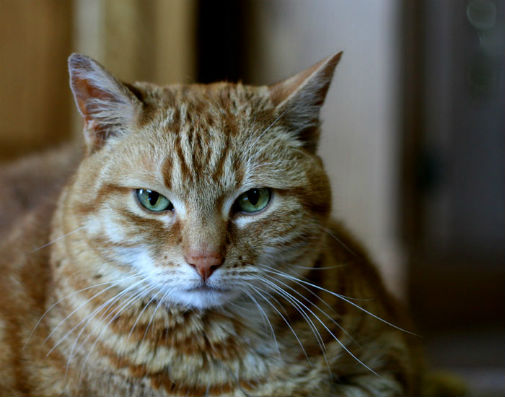Study reveals how cats conquered the world
Posted on 21 June 2017

Researchers analysed DNA from over 200 cat remains. Pic credit: Chris Erwin
Previous studies already stated that farmers in the Near East were probably the first people to successfully tame wild cats 9,000 years ago, but the timing and process of domestication was not clear.
The researchers analysed DNA from over 200 cat remains and found that the spread of this Near East lineage into Europe occurred as early as 6,400 years ago, before a second wave of cat domestication a few thousand years later in ancient Egypt.
Dr Laura Llorente-Rodriguez, a Marie Curie Research Fellow at BioArCh, Department of Archaeology, University of York, was involved in identifying wild and domestic cat specimens and contributed in the contextualization of the samples.
Rat catchers
Scientists think wildcats initially colonised farms to prey on mice attracted to grain stores, starting the long relationship between humans and felines.
They spent thousands of years working as rat catchers on ships and farms in which they were selected for their behaviour, before they became more diverse in their colour patterns or morphology.
In the new study, researchers extracted both mitochondrial and nuclear DNA from ancient cat remains that came from Viking graves, Egyptian mummies and Stone Age sites.
The evidence shows cat domestication began about 9,000 years ago in the Near East, where farming started and then spread into Europe around 6,400 years ago. A second wave of cat domestication happened in ancient Egypt.
Cats spread to Europe during the Roman period and went even further during the Viking era. Egyptian cat DNA was even found in a Viking port, suggesting cats were carried on maritime trading routes to northern Europe.
The study shows tabby cats appeared only in the Middle Ages with DNA evidence suggesting the gene mutation that causes blotched markings appeared in a cat in western Turkey in the 14th Century.
Over the next few hundred years, tabbies spread around the world.
Tabby
Dr Laura Llorente-Rodriguez said: “Other studies already linked cat domestication with the first farmers in the Near East but how and when they ‘colonised’ other regions was not fully understood.
“This major study has shed new light on the origins of the humble domestic cat thanks to the incorporation of archaeological specimens.”
The study reveals the contribution of two main populations of Felis silvestris lybica to the domestic cat gene pool, their spread and the origin of the blotched fur cats in the Middle Ages.
“This does not mean that the domestic cat had stopped evolving. There are thousands of cats all around the world which means there is a lot of variability for the natural and artificial selection of cats.
“Ancient cats were apparently selected for their useful hunting behaviour; nowadays traits such as fur colour and length can be highly-valued for people looking for a cat. Who knows what other features will be of future interest, ” Dr Llorente-Rodriguez added.
The study is published in Nature Ecology & Evolution.
Explore more news

Sodium channels in breast cancer cells a promising target for future treatments, study reveals
Thursday 25 July 2024

Cooling the classroom: University of York researchers to investigate UK schools’ responses to hot weather
Wednesday 24 July 2024

Hunter-gatherers kept an 'orderly home' in the earliest known British dwelling, study shows
Tuesday 23 July 2024

Study uses Game of Thrones to advance understanding of face blindness
Tuesday 23 July 2024

York academic contributes to new report on men’s health which reveals disparities between most and least deprived areas in the UK
Wednesday 17 July 2024
